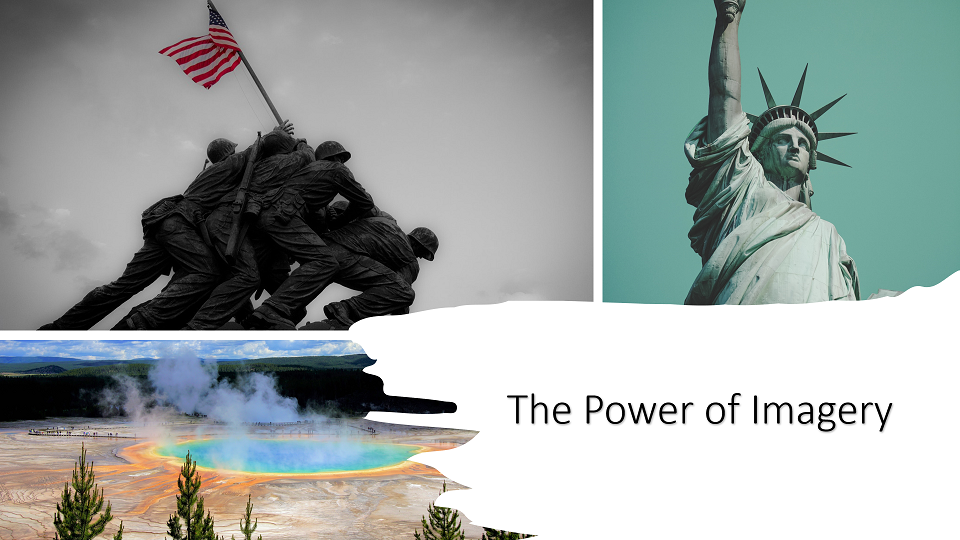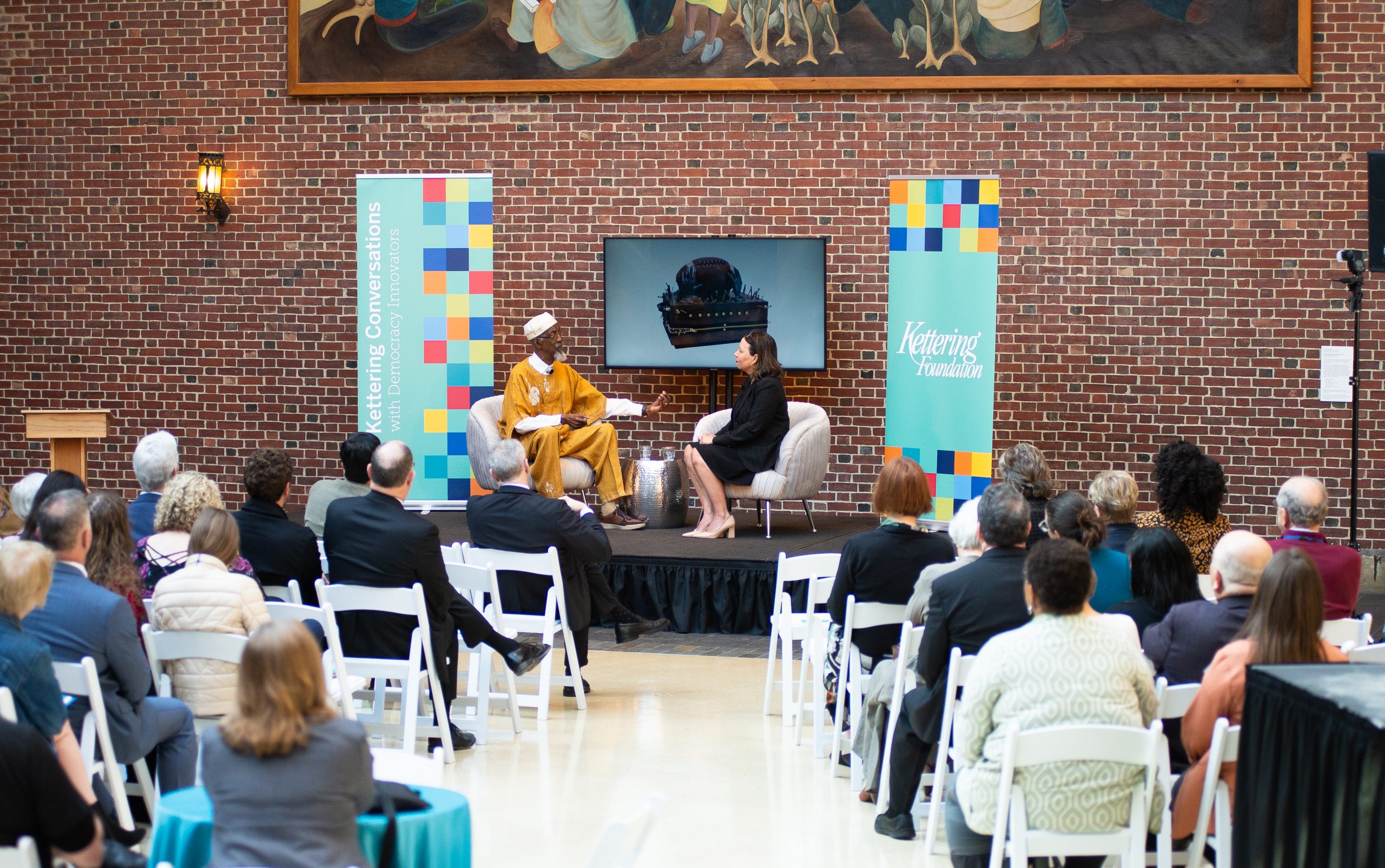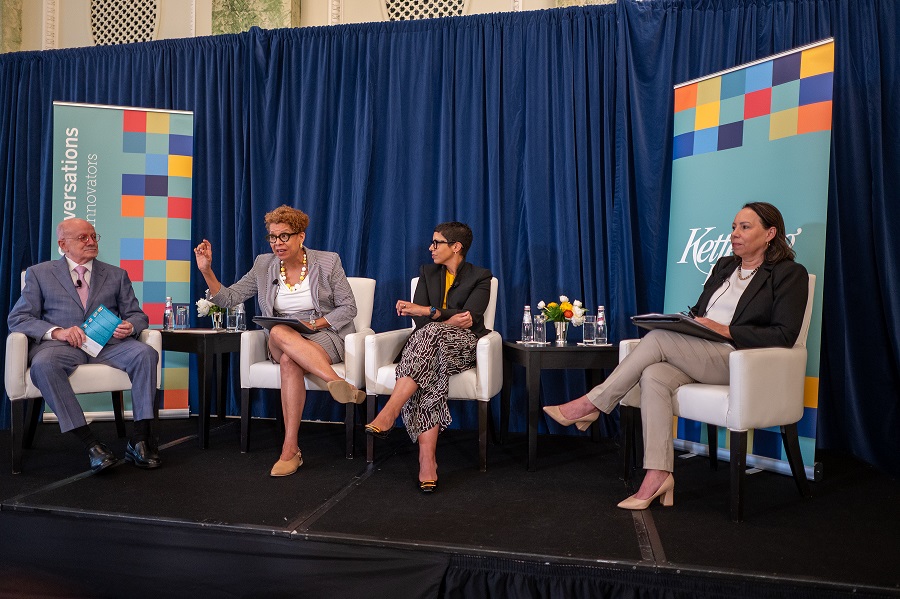By Maura Casey
Much of the time, democracy is a celebration of documents and the words that make them powerful: The Bill of Rights, the Constitution, the Declaration of Independence among them. We cherish the ringing phrases of liberty captured in speeches such as the Gettysburg Address or President Franklin D. Roosevelt’s wartime speech on the Four Freedoms – Freedom of religion, of speech, freedom from want and freedom from fear.
 Yet art is overlooked as an expression of the critical elements of our democracy. Turning a blind eye to its crucial role misses how important art has been to marking milestones in our history, or even changing our country for the better. Examples abound. Photographers and artists captured the beauty of Yellowstone to persuade Congress in 1872 to make the area our first national park; a photo, then a statue, depicting U.S. Marines raising a flag on Mount Suribachi during the Battle of Iwo Jima has inspired generations; the Statue of Liberty in New York Harbor has long been a beacon of hope and source of inspiration to Americans and immigrants everywhere.
Yet art is overlooked as an expression of the critical elements of our democracy. Turning a blind eye to its crucial role misses how important art has been to marking milestones in our history, or even changing our country for the better. Examples abound. Photographers and artists captured the beauty of Yellowstone to persuade Congress in 1872 to make the area our first national park; a photo, then a statue, depicting U.S. Marines raising a flag on Mount Suribachi during the Battle of Iwo Jima has inspired generations; the Statue of Liberty in New York Harbor has long been a beacon of hope and source of inspiration to Americans and immigrants everywhere.
Willis “Bing” Davis well understands how crucial art is to democracy. A celebrated artist and educator, Davis has been creating art that mirrors the complexities and sometimes the shortcomings of American democracy his entire life. Davis and Kettering Foundation President Sharon L. Davies explored his work before a live and virtual audience this past Spring during what was the first of a planned series of Kettering Foundation Conversations with Democracy Innovators.
The series will highlight the work of individuals with transformative ideas by exploring ways to strengthen democracy, focusing on positive narratives amid democratic crisis, and considering opportunities to build upon the strengths of our diverse communities and nation to make them more inclusive and equitable. As the conversation quickly made apparent, Davis, who was born in Greer, South Carolina, but grew up in Dayton, Ohio, has never shied from a radical vision illustrating the promise and the failures of our American way of life.
Davis said that he made a commitment to be an artist in fifth grade. His years of teaching and creating art is reflected in his 40-year career as an educator and community organizer. His work has been internationally honored and has been displayed in museums here and around the world. He retired from teaching in 1998, but never really stopped educating others; in the last 25 years he has opened the Davis Art Studio and EbonNia Gallery in Dayton. Youth and community art and cultural activities are coordinated through SHANGO: Center for the Study of African American Art and Culture, which Davis also founded.
Davies, in her introductory remarks, said that the Foundation is convinced of the vitality of art and its role in bringing citizens together.
“We are thinking very hard about emerging needs in democracy and how things have changed. In a moment where communication among American citizens is so important, art has an important role to play… I thought we would look at a few pieces of yours to help us talk about the role of art in advancing or strengthening democracy,” said Davies.
Together, they and the assembled audience examined a painting, which Davis explained was part of a series of more than 600 works of art that began in 1973.
“This is a new piece in a series called, Ancestral Spirit Dance,” Davis explained. “The series began after my first of 10 visits to Africa to study and learn.” He began the series in 1973. It now numbers around 620 works of art. He said his art was influenced both by African American art, culture, music and by his mother’s quilts, which she created throughout her life until she died at the age of 101.
“My mom was a quilter with about a fifth-grade education when we moved here, and I’ve been around quilts all my life. I looked at shapes and patterns in African art and African art and culture, which includes also music and textiles to set up rhythm and patterns,” Davis said. “Basically, the architectural patterns, with the organic movement which you would call abstraction really is improvisation. So, in a way, I am playing music and creating melodies and rhythm… but I am using structure, with Wynton Marsalis at the top and John Coltrane at the bottom,” he said to the laughter of the audience.
“I saw a video once as you were creating this series. and you talked about hearing music as you were creating. I could see it in the way in which you were capturing that,” Davies said. “Then you got towards the end of the video, and you said, ‘and this is the fun part.’ It’s like you reach a certain moment.”
Davis agreed, saying, “You get to that part where if flows, where it is coming through me and I’m a vessel, that’s the fun part and the art just flows out… It is a flowing and a connecting. It is such a rewarding experience, it allows you not only to create what you are creating, but you carry it with you every place you go.”
 “It strikes me that as art honors and celebrates African American culture, sometimes art can do something different. It can also be a commentary,” Davies said, and directed the audience to another work on art depicted on a screen. One of Davis’ newer works is a football, surrounded by nails, with two raised hands, one on each end.
“It strikes me that as art honors and celebrates African American culture, sometimes art can do something different. It can also be a commentary,” Davies said, and directed the audience to another work on art depicted on a screen. One of Davis’ newer works is a football, surrounded by nails, with two raised hands, one on each end.
Davis explained that the work of art was his reaction to events of the last several years. Titled, Colin Kaepernick, George Floyd Knee Cushion, he said, it was his way of saying, “it is better to take a knee than receive a knee.”
“Just looking at it and thinking about the message it strikes me that this is what art in a democratic society is all about,” Davies said. “It is free expression on the part of the artist, but it is celebrating the right of expression of Colin at the same time and the lack of the ability to communicate by George Floyd, as he was literally dying under the knee of a police officer.”
Another work depicted a ladder with numerous tags hung over the rungs. Each tag had the name of an African American shot by police. Called, Jacob’s Ladder, it was so named to remember the Kenosha, Wisconsin, police shooting of Jacob Blake, who lost the use of his legs after being shot seven times by police in 2020. Davis said it was his way of telling those who died that they were not forgotten, and of paying homage to their lives and the tragedy of their deaths.
“Part of the beauty of a democracy is that we have the right to express ourselves, our thoughts, our dissent, and this is an example,” Davies said.
Davis agreed and said his mother was a powerful influence on how he lived his life and expressed himself. In part because of her, he has always tried to help others.
“I was raised by a beautiful, brilliant black woman who raised six children, but who told us, ‘You can still be what you want to be.’ But she challenged us to do two things: Reach high, and reach back,” he recalled. “If we were going to stay under her roof and eat her food, we had to plan to do something with what we had been given. She would say, ‘Remember you are nowhere if you don’t reach back to help someone else.’”
“Traveling around the country and the world, I was always trying to understand myself. I always make the joke that I was looking for me, and I found us.” Davis said. “All human beings evolved from an African woman and so we are brothers and sisters whether we want to be or not.”
“You are a real local treasure,” Davies said. “The founder of the Kettering Foundation, Charles F. Kettering, was also deeply committed to this community. One of the things we think about every day is how to honor his legacy… you are enabling us to do that by having this conversation with us today, helping us think about the needs of democracy and the unique role that art can play.”
“The artist should be his own best piece of work,” Davis said. “As I work on myself to become better, that can take place anywhere. It is not the location. But there is a lot we can build on here. As we look around, we can complain, but we have to work while we complain.”
The full recording of the conversation is available to watch here.
A second conversation with democratic innovators was held in June of 2023 at the Crystal Room at the Willard InterContinental Washington hotel. Kettering Foundation President and CEO Sharon L. Davies moderated a panel focused on recent attacks on higher education and their implications for democracy. Members of the panel were:
- Sheryll Cashin, Carmack Waterhouse Professor of Law, Civil Rights, and Social Justice, Georgetown University Law School;
- Melissa Murray, Frederick I. and Grace Stokes Professor of Law, New York University School of Law; and
- Eduardo Padrón, President Emeritus, Miami Dade College.

The June panel conversation is streaming on the Kettering Foundation website.
Maura Casey is a former editorial writer for The New York Times.



